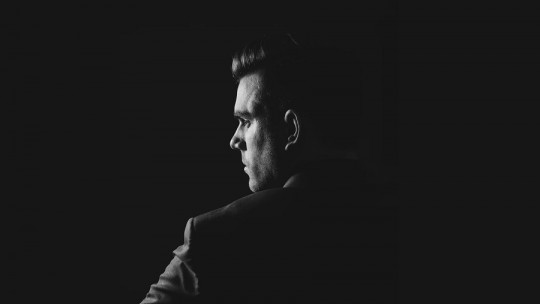
There are many phobias, associated with an infinite number of stimuli. There are phobias, but they are less known than others, such as arrhenphobia. This phobia consists of the intense and persistent fear of men.
Arrhenphobia originates especially as a result of traumatic situations experienced with people of the male sex In this article we will learn what it consists of, its symptoms, causes and possible treatments to apply.
Arrhenphobia: what does it consist of?
As we said, arrhenphobia is a little-known phobia; It is a phobia of men, and it translates into an intense, persistent and disproportionate fear to the male sex. Both men and women can suffer from it.
This fear is also irrational ; Irrationality is one of the characteristics that differentiates a phobia from a fear.
Arrhenphobia can be classified in the “other phobias” section proposed by the DSM-5 (Diagnostic Manual of Mental Disorders), since it does not correspond to any of the other 4 types of phobias proposed by the manual (phobia of animals, blood/injection/wounds, to natural situations and situational phobias).
In this group of phobias (“other phobias”), along with arrhenphobia, other types of phobia appear, such as the intense fear of choking, contracting a disease, etc.
Symptoms
The symptoms of arrhenphobia include the typical symptoms of a specific phobia, which are mainly:
1. Intense fear
Appears an intense fear of men, as well as situations that may involve meeting a man, stay alone with him, start a conversation, etc. Instead of fear it can also be anxiety (in high doses).
2. Physiological symptoms
Associated with the previous anxiety, physiological symptoms may appear in arrhenphobia, such as: increased heart rate, increased blood pressure, dizziness, nausea, vomiting hyperreactivity to stimuli, insomnia, nightmares, etc.
3. Panic attacks
In extreme cases of arrhenphobia, panic attacks may even appear in the presence of a man (or at the possibility of seeing him, being alone with him, etc.).
These episodes are characterized by the above symptoms along with one or more of the following symptoms: feeling of shortness of breath, labored breathing, fear of “going crazy” fear of “losing control”, etc.
4. Avoidance or resistance
Another characteristic symptom of arrhenphobia is that men are avoided at all costs; Situations that could lead to knowing someone, interacting with them, are also avoided, etc. It may also happen that, instead of avoiding men, situations of interaction with them are faced, but with great anxiety (that is, the situation is “resisted”).
5. Pronounced discomfort
In addition to intense fear and physiological symptoms, intense discomfort appears in the patient that affects their daily life. This discomfort is physical and psychological, and can reduce the quality of life of the person with arrhenphobia.
6. Altered operation
The above symptoms end up interfering with the person’s overall functioning. This includes all (or some) of its spheres: work, social, personal sphere, etc. This symptom is very characteristic of mental disorders in general and not only anxiety disorders or, as in this case, phobias.
Causes
The causes of arrhenphobia are mainly related to traumatic experiences lived with men If this traumatic experience has not been treated psychologically (that is, if it has not been processed and assumed), the problems it triggers can worsen.
The origin of arrhenphobia also is related to a certain genetic vulnerability to suffering from an anxiety disorder as well as with a fragile, insecure and/or dependent temperament or personality.
Traumatic experiences
Returning to the traumatic situation experienced, this can be related to abuse by a man (whether physical, sexual, verbal attacks…), with a situation of sexual abuse and even rape.
If it has not been experienced firsthand, it may also have been witnessed by close people (for example, observing the father hitting the mother, due to vicarious conditioning) or one may even have heard stories of other people’s suffering and negative consequences related to men.
It seems logical that the fact of having experienced such a traumatic situation ends up giving rise to a phobia (or another mental disorder), since the person, consciously or unconsciously, does not want to suffer that again and that is why he “protects” himself by avoiding the stimulus or object in question (in this case, men).
Dysfunctional mechanisms
However, phobias come from responses that are intended to be adaptive but in reality end up being dysfunctional and pathological, since avoiding something keeps us from facing life’s situations and prevents us from developing adequate coping mechanisms.
Besides, we enter a vicious circle because if we do not face what we fear, we cannot understand or manage it, and the discomfort is still there, perpetuating itself over time.
Treatment
The psychological treatment of arrhenphobia will have the objective of dealing with the phobic stimulus, in this case men. Without adequate coping, the stimulus cannot be processed correctly (fueling avoidant behaviors) and this will only perpetuate and make arrhenphobia chronic.
So, the treatments that are usually used in arrhenphobia as in many other specific phobias, are the following:
1. Exposure techniques
Exposure therapy involves exposing the patient to the object they fear so much. It is done through a hierarchy of gradual items ; In this case, the item scale can include increasingly close interaction situations with men. This type of therapy is the most effective to treat specific phobias, where the phobic object is well defined.
2. Cognitive techniques
Cognitive therapy mainly includes cognitive restructuring. Through it, the aim is to inform the patient about his phobia, to understand why it has appeared, why it persists, and Learn to identify the catastrophic thoughts you have in relation to men In addition, we will try to replace these thoughts with other, more realistic and functional thoughts.
The decision on the type of treatment will always be made taking into account the degree of intensity of the arrhenphobia and the characteristics of each person.








